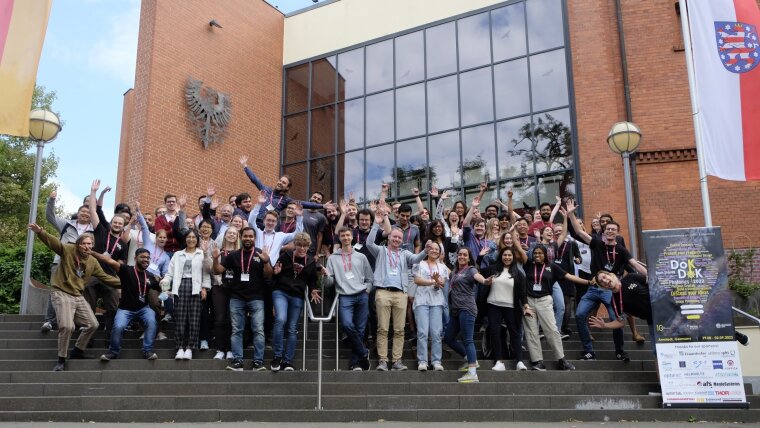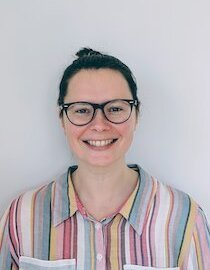

Prof. Dr. Kurt Busch
Humboldt University of Berlin
-
Multiphoton dynamics in tight-binding lattices
Kurt Busch1,2
1 Humboldt-Universität zu Berlin, AG Theoretische Optik & Photonik, 12489 Berlin, Germany
2 Max Born Institute, 12489 Berlin, Germany
Indistinguishable and/or entangled photons propagating in waveguide arrays (WAs) represent a promising platform whose utility ranges from research on fundamental aspects of quantum mechanics all the way to applications in quantum sensing and quantum information processing. In this talk, an overview of a number of recent developments regarding disorder and decoherence-related aspects of multiphoton physics in WAs will be provided. When such systems are combined with ideas from topological photonics such as synthetic dimensions and exceptional points, several interesting device applications can be developed.
Specifically, quantum simulators of decoherence reveal that while decoherence processes inevitably destroy single-particle coherence and any form of multiparticle entanglement, quantum correlations based on particle indistinguishability do endure [1,2,3]. Further, by judiciously combining multi-photon states with the idea of synthetic dimensions in WAs yields the notion of a synthetic atom and in turn this provides entirely novel perspectives on the dynamics of such multi-photon states that include applications in discrete fractional Fourier transforms and high-order exceptional points for quantum sensing. [4,5,6,7].
Literature:
[1] Journal of Physics B 51, 024002 (2018)
[2] Nature Partner Journals: Quantum Information 4, 45 (2018)
[3] New Journal of Physics 21, 053041 (2019)
[4] Photonics Research 8, 1161 (2020)
[5] Journal of the Optical Society of America B 35, 1985 (2018)
[6] Photonics Research 7, 862 (2019)
[7] Laser & Photonics Reviews doi.org/10.1002/lpor.202100707
Prof. Dr. Christian Eggeling
Friedrich Schiller University Jena
-
CHALLENGES IN MOLECULAR MEMBRANE INVESTIGATIONS - AN ADVANCED OPTICAL MICROSCOPY STUDY
Eggeling1,2,3, F. Reina1,2, C.B. Lagerholm3,4, K. Reglinski1,2, P. Carravilla1,2, C. Franke1
1Friedrich‐Schiller‐University Jena, Institute of Applied Optics and Biophysics, 07743 Jena, Germany; 2Leibniz Institute of Photonic Technology e.V., Department Biophysical Imaging, 07745 Jena, Germany; 3University of Oxford, MRC Human Immunology Unit, OX3 9DS Oxford, United Kingdom; 4University of Oxford, Kennedy Institute of Rheumatology, Oxford OX3 7FY, United Kingdom
E-mail: christian.eggeling@uni-jena.de
Molecular interactions are key in cellular signaling. They are usually ruled by the organization and mobility of the involved molecules. For example, the direct and non-invasive observation of the interactions in the living cell membrane is often impeded by principle limitations of conventional far-field optical microscopes, for example with respect to limited spatio-temporal resolution. Here, we present an advanced optical microscopy study involving tools such super-resolution STED microscopy in combination with spectral imaging and fluorescence correlation spectroscopy or single-molecule tracking on a MINFLUX and interferometric Scattering (iSCAT) microscope. We highlight how these approaches can reveal novel aspects of membrane bioactivity such as of the existence and function of potential lipid rafts.
Prof. Dr. Caterina Cocchi
University of Oldenburg
-
Ultrafast spectroscopy in hybrid interfaces from first principles
Caterina Cocchi
Humboldt-Universität zu Berlin, Institut für Physik und IRIS Adlershof, D-12489 Berlin
Carl von Ossietzky Universität Oldenburg, Institut für Physik, D-26129 Oldenburg
The study of coherent light-matter interactions poses several challenges for theory. While real-time time-dependent density functional theory in combination with Ehrenfest dynamics is a mature methodology to address these problems from first principles, the description and interpretation of the entailed processes involving optical nonlinearities and vibronic coupling is far from trivial. In this presentation, I will review the above-mentioned methodology with the examples of simple molecules [1,2] and demonstrate its ability to reproduce and rationalize ultrafast charge-transfer processes in realistic hybrid inorganic/organic interfaces [3,4].
References:
[1] J. Krumland, A. M. Valencia, S. Pittalis, C. A. Rozzi, and C. Cocchi, J. Chem. Phys. 153, 054106 (2020).
[2] K. H. Herperger, J. Krumland, and C. Cocchi, J. Phys. Chem. A 125, 9619-9631 (2021).
[3] 38. M. Jacobs, J. Krumland, A. M. Valencia, H. Wang, M. Rossi, and C. Cocchi, Adv. Phys. X 5, 1749883 (2020).
[4] M. Jacobs, J. Krumland, and C. Cocchi, ACS Appl. Nano Mater. 5, 5187 (2022).
Prof. Dr. Dragomir Neshev
Australian National University
-
Optimising amplitude and phase modulation in tunable optical metasurfaces
Dragomir Neshev
ARC Centre of Excellence for Transformative Meta-Optical Systems (TMOS)
Research School of Physics,
Australian National UniversityOptical metasurfaces are driving the future of smart and miniaturised optical technologies. Several exciting applications have been demonstrated over the past few years, including high efficiency metalenses and holograms. However, all examples to date use static metasurfaces that cannot be dynamically reconfigured to perform multiple optical functions. The need for metasurfaces with reconfigurable and programable functionalities has driven a quest for the development of metasurfaces with strong tunability. In this talk, I will present some of our recent advances in reconfiguring optical metasurfaces enabled by tuning their surrounding environment or constituent elements. In particular, I will discuss the development of liquid crystal-tunable metasurfaces for full-range optical phase modulation of 2π. I will also discuss the development of electrically driven thermo-optical metasurfaces to perform fast amplitude modulation of over 70%. Finally, I will discuss some of fundamental considerations needed to maximise the change of the light transmitted through optical metasurfaces with lossy materials, including free-form optimisation of optical transmission through phase-changed metasurfaces. The presented developments aim to advance the field of tunable optical metasurface for real-world applications of active meta-optics.
-
Research in industry vs. academia: chasing scientific adventures and finding the right fit
Dr. Gabrielle Thomas
In choosing a career path in optics and photonics, many people think they must “choose” whether to take the industry path or the academic path. But what really is the difference, if your main drive is to work in research? Does this great barrier really exist? In this talk, I try to highlight some of the main differences between research in industry vs. academia, and will share some of the experiences and insights I’ve picked up during my career, trying to navigate these questions.
-
Working in industry – Commercialize innovative technologies
Many master and doctoral students as well as postdoctoral fellows face at some point in their career the decision between continuing in academia or change for a job in industry. Both ways have their advantages and disadvantages as well as associated stereotypes.
After I will present my professional journey from industry to academia and back to industry, I will compare both career pathways and give an overview about important aspects to be considered if you want to switch for a job in industry.
Furthermore, I will introduce the commercialization process of innovative technologies at ZEISS Microscopy and highlight the importance of a close cooperation between academia and industry.
-
Optical spectroscopy of layered semiconductors
Ioannis Paradisanos
Layered materials such as graphene and monolayer transition metal dichalcogenides (TMDs) exhibit wonderful optoelectronic properties resulting from their reduced dimensionality and crystal symmetry. In particular, TMDs are semiconductors with a direct band gap in the monolayer (i.e. atomic-scale thickness) limit and a highly efficient light-matter coupling. Consequently, this family of layered materials is especially promising for fundamental studies and potential applications in optoelectronics, valleytronics and quantum technology. The two-dimensional confinement of the carriers and the weak dielectric screening from the environment enhances the Coulomb interaction. This results in the formation of bound electronhole pairs (i.e. excitons) that govern the optical and spin properties of these materials. In this talk, I will show what we can learn from optical spectroscopy of these atomically thin semiconductors and their heterostructures for future applications but also for fundamental physics. I will provide a basic understanding of the unique crystal and electronic structure of TMDs and how they interact with light.
Glimpses of DoKDoK 2022






















